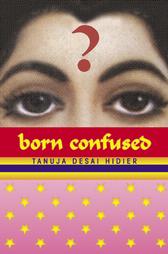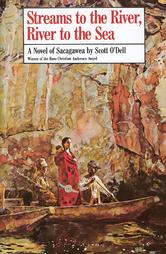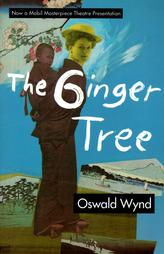-Po Bronson

Born Confused
Tanuja Desai HidierPublisher: Scholastic; 1st edition (October 1, 2002)
ISBN: 0439357624
This is the story of a young girl in USA. She is born of Indian parents who immigrated long time back to United States. As the book claims "the girl is not Indian enough for Indians and not American enough for Americans". I don't know, does this really show the feelings American born Indian kids have. ABCD (Americn Born Confused Desi) is what kids born of Indian parents in United states are called.
The lead character of the novel, Dimple Lala is a girl in High school and hangs out most of the time with her childhood friend Gwyn (a white girl). She is a photography enthusiast and develops pictures in a darkroom she set up in her basement. She has a no-no attitude towards most of the Indian things and does not associate herself strongly with Indians in USA.
The scenario changes when she is introduced to a guy called "Karsh Kapoor" who is from India and is the son of a friend of her parents. So the initial meeting is a bit awkward and she despises him for his taste of "Hindi Music, Indian style of dressing and so on". She hates the idea of her parents trying to set her up with some Desi dude.
She has a cousin in United States and she is from India too. She had not liked her much in India but when she meets her again, she is plesantly surprised. Her cousin invites her to an International festival and she goes there with Gwyn. Gwyn finds Karsh attractive and starts hitting on him. This is when Dimple realizes that she is attracted to him as well. Well, the story goes on, with dimple trying to find her Indian roots and associated with what Indianism is about. In her journey, she comes to realize that all that is Indian is not backward, she comes to realized how wonderful her parents and contrary to her belief, they are very open minded.
I don't know. When I started reading the book, it felt a bit weird. The way the
sentences are formed, it seems that someone was thinking in Hindi and translated
it in english, pretty much verbatim. But once I got through the first few pages,
it seemed kind of interesting. The story reached its peak somewhere towards
3/4th of the book and becomes a bit sappy towards the end. Let me state that
this book is on the Librarian's recommendations at Dekalb Public Library, so it
has got certain merit. The reviews on Amazon.com are very varied. The ABCD crowd
seems to think little of the book, but some of the people seem to think very
high of it.
Recommended

Streams to the river, river to the sea
ISBN: 0-39540-4304April 1986
Publisher: Houghton Mifflin
The setting of the book is that of the year 1801, when Thomas Jefferson, the president of the United States of America bought the state of Louisiana from the French for Fifteen millon dollars. At that time, this land was mostly occupied by various Red Indian tribes. There was not really a good record of what all the land offered, what kind of flora and fauna thrived in this unexplored land.
The story starts with an attack on the "Shoshone" tribe by the "Minnetaree" tribe. A girl called Sacagawea (Rain) and her friend "Running Deer" are abducted and made slaves to the Minnetaree tribe.
Over time, the girl (13 years old) is deemed worthy to be married to the son (Red Hawk) of the chieftain of the Minnetaree tribe. The night before she is to be married, the guy (Tall Rock) abducts her and takes her to another tribe and wants to marry her. She however, runs away from there and gets stuck on an island. A passing boat with a Frenchman and his wife help her and bring her back to the Minnetaree tribe.
Back at the chieftain's house, the french, Red Hawk and the chief of the tribe where Tall Rock had taken her claim that she belongs to them. A game is played and the Frenchman wins her. So she is married to the frenchman.
The frenchman soon leaves to go trade with other tribes. After he leaves, she comes to realize that she is pregnant. Her husband returns with a bunch of other people (Caucasians: Clark and Lewis), who have been given the responsibility of mapping the state of Louisiana for its natural resources by the president.
With her husband, her newborn kid, Clark and Lewis, she starts on the journey towards west. On this journey she acts as a translator, mediator and the local expert for the crew. The journey is around 4000 miles and she and her infant fall sick many times and come close to death. During the journey she gets to meet her family from whom she was abducted. She slowly falls in love with Captain Clark, who reciprocates.
They have a black man in their crew called Ben York and he delivers her his
advice:
"You're not black like I am", he said. "You're not white, either. Sort of in between, I'd say. In St. Louis they'll not be rubbing your hands to see if the black comes off. But they'll be curious. They see only a few Indian men and no Indian girls - at least, not pretty ones like you. They'll be admiring, saying nice things. But don't let this fool you. You're an Indian and I am a black man. I am a slave and so are you, in a way. If a white man marries you, he's called a squaw-man and people look down on him. The same as they'd look down on a white girl who married me."At the end of the story, the girl takes a horse and runs back to her original family with her baby. This is pretty much a true story. The author might have used his imagination a bit but he cites his sources. Clark and Lewis did actually make this journey with Sacagawea.
Recommended

The Ginger Tree
Author: Oswald WyndPublisher: Perennial
ISBN: 0060959673
This is an interesting books in many ways. First the book has been written in the style of journal entries and letters. The narrative is from the point of view of the lead character, Mary Mcanzie and her thoughts on various things that are happening to her in her life. Second, it is through her eyes that we get a look at various aspects of lives of three different cultures, the British (the least), the Chinese (somewhat) and Japanese (mostly).
The story starts with young Mary travelling to China to be married to Richard, who works for the British army. It was a long voyage from Britain to China, on board a ship that goes through some rough weather. China is rucuperating after the Boxer war in which the British triumphed and many chinese rebels were beheaded and their heads displayed all around the city.
She lives in China for a while, giving birth to a female child "Jane". At one of the social gatherings by her friend Marie (french), she meets a Japanese Count Kurihama. Through her journal entries we know that she is not entirely happy with Richard. She feels that Richard comes to her only for fulfilling his desires and then leaves quickly. Does it give us any insight on the relationship between the british males and females of that era? Who knows?
Later when the atomosphere in the city (Peking) becomes tense and Richard is posted for duty elsewhere, she is forced to stay with Marie and her husband at the Legation Quarters. There she happens to meet Count Kurihama again. We are not given many details at this point but we come to know that she sleeps with him and gets pregnant.
When her husband Richard gets back home, he calls her a whore and books her back to Britain. She is not allowed to see her child Jane anymore. At this point we come to know a bit about the Japanese psyche. Count Kurihama has left people who will take care of her in case she was in trouble because of him. So, she is given a chance of going to Japan and she gladly takes it.
She remains in Japan for a while and gives birth to a boy. Again Count Kurihama provides for her and eventually comes to her. He finds that the boy looks exactly like him (i.e. japanese rather than caucasian) and he decides that for the best of the boy, he must be send to a foster family where the kid will grow up as a Japenese. Mary does not know of this plot and is utterly devastated when she cannot trace any whereabouts of her kid.
She decides that she does not want any more "alms" from Kurihama and with the help of her two friends Alicia and Aiko (a female Japanese reformer) gets a job in a department store, creating western outfits for Japanese women. At this time, we find that the journal entries are coming rather far apart. Most of the novel from here onwards describes the way of life in Japan, its rise from a somewhat underdeveloped country to a industrial superpower. The novel is a bit stretched here. Mary comes in contact with many people during this part of her life (almost 37 years.) Eventually, the First World War breaks through and Japan is involved in the war. She is forced to leave Japan for Britain and Kurihama ensures that she gets a safe passage. When her ship is docked at Singapore, she is summoned by the police. When she appears in response to the summon, she meets a young army officer. He talks to her for a while and opens his wallet and shows her the picture of his family. She looks at the picture, at his son and finds herself staring at her male kid. She realizes that the officer is her son. She deals with the situation very gently, letting him go. He asks her to visit him after the war is over, he knows that Japan is going to lose, and thus he says, "If I am not there in body, I will be there in spirit." When she asks him why he says that, he replies that he is an aviator.
So, the book eventually ends somewhat abruptly, although in some sense there is
a closure to the story. It is certainly an interesting story, written in a novel
way and offering interestin viewpoints on many cultures.
Interesting and worth spending time on